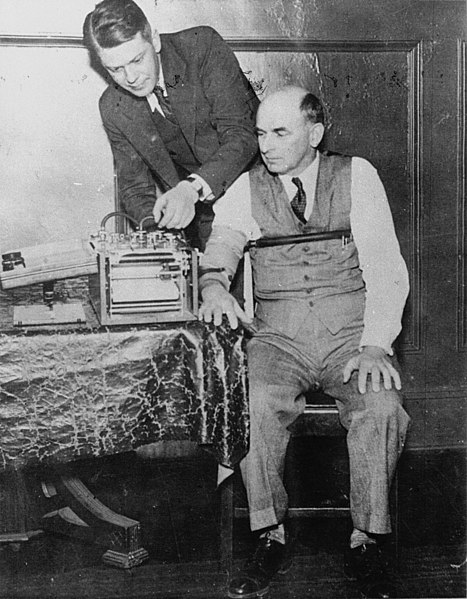A polygraph, often incorrectly referred to as a lie detector test, is a junk science device or procedure that measures and records several physiological indicators such as blood pressure, pulse, respiration, and skin conductivity while a person is asked and answers a series of questions. The belief underpinning the use of the polygraph is that deceptive answers will produce physiological responses that can be differentiated from those associated with non-deceptive answers; however, there are no specific physiological reactions associated with lying, making it difficult to identify factors that separate those who are lying from those who are telling the truth.
American inventor Leonarde Keeler (1903–1949) testing his improved polygraph on Kohler, a former witness for the prosecution at the 1935 trial of Richard Hauptmann
Demonstrating the administration of the polygraph, the polygrapher making notes on the readouts. 1970s
Brochure of the Defense Security Service (DSS) about polygraph testing
A lie is an assertion that is believed to be false, typically used with the purpose of deceiving or misleading someone. The practice of communicating lies is called lying. A person who communicates a lie may be termed a liar. Lies can be interpreted as deliberately false statements or misleading statements, though not all statements that are literally false are considered lies – metaphors, hyperboles, and other figurative rhetoric are not intended to mislead, while lies are explicitly meant for literal interpretation by their audience. Lies may also serve a variety of instrumental, interpersonal, or psychological functions for the individuals who use them.
The fictional character Pinocchio is a common depiction of a liar.
A motivational poster about lying declares "An ostrich only thinks he 'covers up'"
Consumer protection laws often mandate the posting of notices, such as this one which appears in all automotive repair shops in California.
Plato presented arguments to justify the use of noble lies in his Republic.







